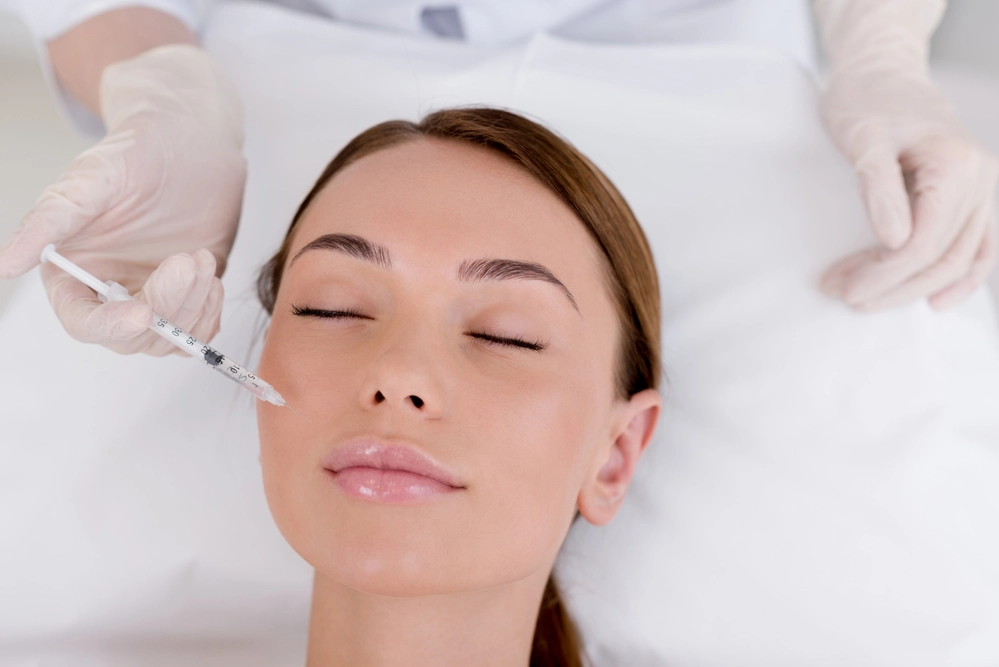PRP Treatments
What is the PRP Facial Lift?
PRP stands for Platelet Rich Plasma and is a procedure whereby we make use of your own blood plasma to treat the areas of the body in concern.
Dermatologists began using PRP to promote the growth of collagen.
PRP therapy is predominantly used on the face, particularly around the eyes, mouth and nose although it may be used on the backs of the hands and all over the body, more commonly the décolletage to give a more youthful and radiant appearance.

What does the Treatment Involve?
After a consultation with our Aesthetic Consultant, your practitioner will draw your blood. This is done in a similar way to when you have blood taken for testing at the doctor’s office.
The blood will then be spun in a centrifuge to separate the platelet plasma from the red blood cells. The platelet plasma, which is the component of the blood that is injected into the skin to treat the condition.
When the platelet plasma is injected into the skin, the platelets release their growth factors. The growth factors stimulate other cells surrounding the injection site, plumping them up and causing them to increase in volume. The platelet plasma sends out signals to other cells in the body when it is injected, telling them to rush forward to the injection site.
One cell that is stimulated during the process is the fibroblast cell, which is the cell type that creates collagen. Collagen is what gives skin a youthful appearance. As we age, collagen is produced less and less, causing wrinkles and fine lines in the skin, and therapies such as PRP therapy that stimulate collagen production can counteract this. Another cell stimulated during the process is the pre-adipocyte cell, which is a cell type that can convert into a fat cell, which is especially important in the face to fill out lines and to contour the face.
The healing properties of the blood components in PRP can be used as a cosmetic treatment for the following:
- Reducing fine lines and wrinkles
- Tightening and toning skin
- Mild collagen and volume loss
- Crow’s feet and dark under eye circles
- Acne scarring
- Rosacea
- Stimulates new cell growth
- Improves skin tone and texture
- Improves skin complexion
- Helps with first signs of ageing
- Improves skin complexion
- Face
- Neck
- Chest or Décolletage
- Hair Loss
- Hands
- Abdominal Stretch Marks
When will I see results ?
It may take a few weeks for the results of the PRP therapy to become visible.
How long will it take to recover from a PRP treatment?
The actual procedure of injecting the PRP involves the use of topical anaesthetic, although not always depending on the patient and area being treated, rather than local or general anaesthetic, meaning that most patients feel comfortable returning to their normal activities not long afterwards. It is important to be aware that due to there being many injections at the treatment sites, the areas can look swollen, bumpy and red post treatment and these effects can last for a couple of days so it is best to have some time to recover.
What are the risks and potential complications from PRP treatments?
There are few side effects associated with Platelet Rich Plasma Therapy. Immediately after the procedure, you can expect some bruising, swelling and redness at the injection sites. You may also experience some tenderness, bruise and pain at the injection sites. However, any side effects should dissipate within a few days following the procedure.
What should you do after a Platelet Rich Plasma Therapy treatment?
It is very important that you follow the advice of your practitioner following treatment. Post-treatment advice could include:
The use of cold compresses to treat swelling in the treated area, as recommended
Avoid touching and applying any cream or make up for 24 hrs after the treatment to prevent risk of infection.
Most patients will be able to go straight back to their normal regime following treatment, but if you experience any tenderness or pain at the treatment site, you should take extra care when washing and caring for your skin in the days following the PRP therapy.
Who should NOT have a Platelet Rich Plasma Therapy treatment?
To undergo PRP therapy, you should be in general good health and you should have realistic expectations of the outcome. Most people are suitable candidates for PRP therapy, and it is recommended as a safe treatment for individuals who are unable to undergo more invasive procedures such as a full face lift, due to the risks associated with general anaesthetic (although it will not achieve the same results as a surgical face lift).
Individuals with platelet dysfunction syndrome, critical thrombocytopenia, hypofibrinogenaemia, haemodynamic instability, sepsis, acute & chronic infections and chronic liver pathology are not suitable candidates for PRP therapy. Those undergoing anti-coagulant therapy are also not suitable candidates.
What are the costs?
| Service Name | Single Session |
| Face | £100 |
| Neck | £80 |
| Face and Neck | £180 |
| Face neck and decollatage | £180 |
| Around and Under Eye Collagen Treatment PRP | £100 |

